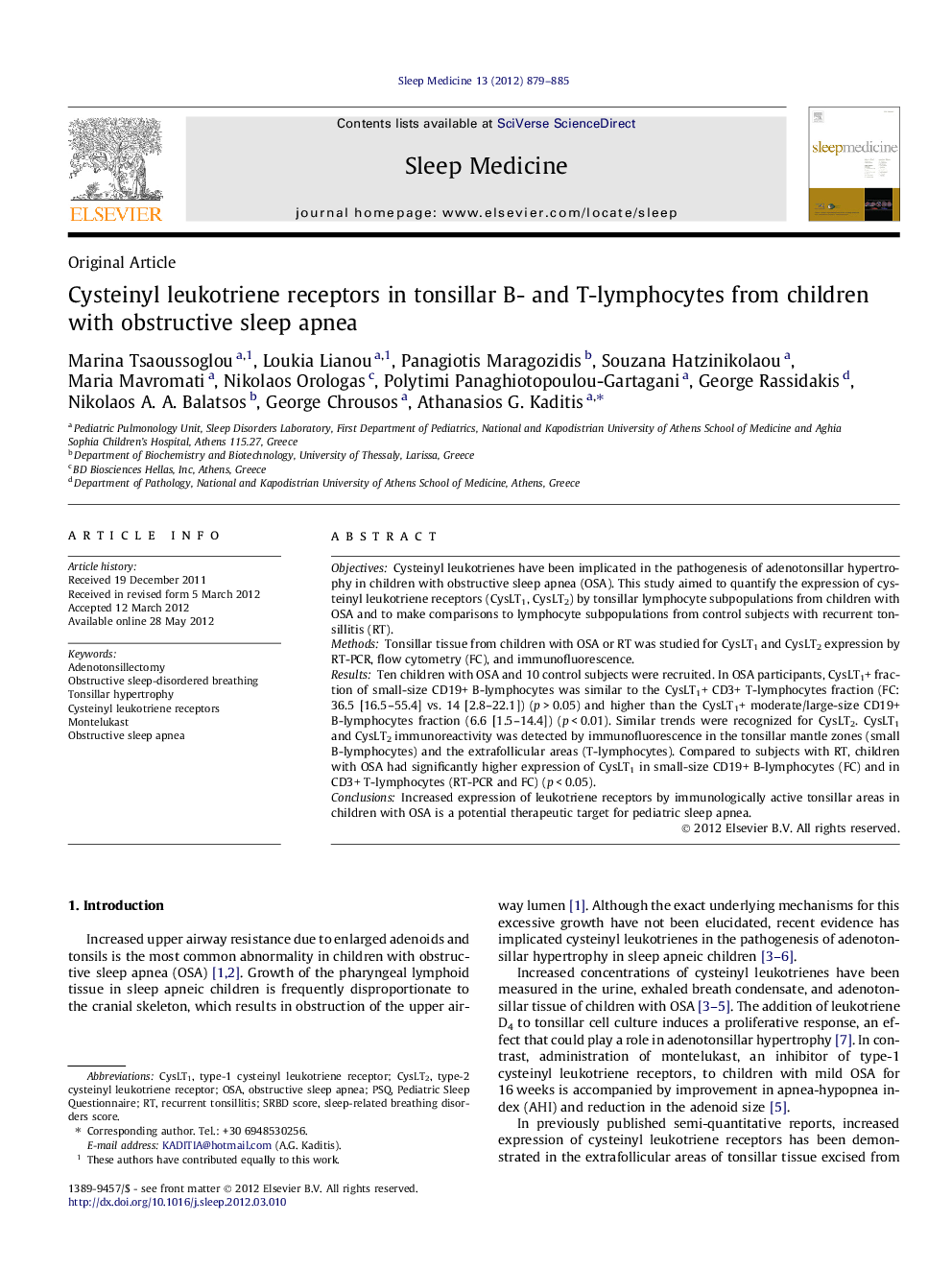| Article ID | Journal | Published Year | Pages | File Type |
|---|---|---|---|---|
| 3176299 | Sleep Medicine | 2012 | 7 Pages |
ObjectivesCysteinyl leukotrienes have been implicated in the pathogenesis of adenotonsillar hypertrophy in children with obstructive sleep apnea (OSA). This study aimed to quantify the expression of cysteinyl leukotriene receptors (CysLT1, CysLT2) by tonsillar lymphocyte subpopulations from children with OSA and to make comparisons to lymphocyte subpopulations from control subjects with recurrent tonsillitis (RT).MethodsTonsillar tissue from children with OSA or RT was studied for CysLT1 and CysLT2 expression by RT-PCR, flow cytometry (FC), and immunofluorescence.ResultsTen children with OSA and 10 control subjects were recruited. In OSA participants, CysLT1+ fraction of small-size CD19+ B-lymphocytes was similar to the CysLT1+ CD3+ T-lymphocytes fraction (FC: 36.5 [16.5–55.4] vs. 14 [2.8–22.1]) (p > 0.05) and higher than the CysLT1+ moderate/large-size CD19+ B-lymphocytes fraction (6.6 [1.5–14.4]) (p < 0.01). Similar trends were recognized for CysLT2. CysLT1 and CysLT2 immunoreactivity was detected by immunofluorescence in the tonsillar mantle zones (small B-lymphocytes) and the extrafollicular areas (T-lymphocytes). Compared to subjects with RT, children with OSA had significantly higher expression of CysLT1 in small-size CD19+ B-lymphocytes (FC) and in CD3+ T-lymphocytes (RT-PCR and FC) (p < 0.05).ConclusionsIncreased expression of leukotriene receptors by immunologically active tonsillar areas in children with OSA is a potential therapeutic target for pediatric sleep apnea.
